The Demography of Roman Italy
This book provides a fresh perspective on the population history of Italy during the late Republic. It employs a range of sources and a multidisciplinary approach to investigate the demographic behaviour of Roman citizens. Dr Hin shows how they adapted to the changing economic, climatic and social conditions in a period of intense conquest. Her critical evaluation of both the positive and negative accounts of the demographic toll taken by warfare and rising societal complexity on the citizen population of Italy leads her to a revisionist middling scenario. In tracing the population history of an ancient conquest society, she provides an accessible pathway into Roman demography, which focuses on the three main demographic parameters mortality, fertility and migration. She unites literary and epigraphic sources with demographic theory, archaeological surveys, climatic and skeletal evidence, models and comparative data. Tables, figures and maps enable readers to visualize the quantitative dynamics at work.
Saskia Hin is a researcher at the Max Planck Institute for Demographic Research.
CAMBRIDGE UNIVERSITY PRESS
Cambridge, New York, Melbourne, Madrid, Cape Town, Singapore, So Paulo, Delhi, Mexico City
Cambridge University Press
The Edinburgh Building, Cambridge CB2 8RU, UK
Published in the United States of America by Cambridge University Press, New York
www.cambridge.org
Information on this title: www.cambridge.org/9781107003934
Saskia Hin 2013
This publication is in copyright. Subject to statutory exception and to the provisions of relevant collective licensing agreements, no reproduction of any part may take place without the written permission of Cambridge University Press.
First published 2013
Printed in the United Kingdom at the University Press, Cambridge
A catalogue record for this publication is available from the British Library
Library of Congress Cataloguing in Publication data
Hin, Saskia, 1980
The demography of Roman Italy : population dynamics in an ancient conquest society (201 BCE14 CE) / Saskia Hin.
pages cm
Includes bibliographical references and index.
ISBN 978-1-107-00393-4
1. Mortality Italy History.2. Fertility, Human Italy History.3. Migration, Internal Italy History.4. Italy Population History.I. Title.
HB1429.H552013
304.60937

09014 dc232012030786
ISBN 978-1-107-00393-4 Hardback
Cambridge University Press has no responsibility for the persistence or accuracy of URLs for external or third-party internet websites referred to in this publication and does not guarantee that any content on such websites is, or will remain, accurate or appropriate.
Acknowledgements
This book was written at the Universities of Leiden and Stanford and at the Max Planck Institute for Demographic Research (Rostock, Germany). I am grateful to colleagues and friends who are or were at each of these places for their advice, support and friendship.
Writing a book was always a dream for me. That it became a history book, and one about Roman history, is, to be honest, first thanks to my preference for chocolate over sports, and, second, to inspiring teachers: Patrick Nieuwenhuyse and Johan Strubbe. In Leiden, Luuk de Ligt enabled me to begin work on the project, and encouraged and helped me bring the Ph.D. project this book is based on to a good conclusion. We finally agreed to disagree over the approach to Roman history, and I am grateful to him for tolerating that. For a good few years, I shared offices and thoughts with Jeremia Pelgrom and Saskia Roselaar, and nothing would have been the same without them. Other colleagues in Leiden have contributed to this book in many ways. I would especially like to thank Paul Erdkamp and Rens Tacoma for their help and advice. Continuous input from the other side of the Dutch border came from Walter Scheidel as a co-advisor, and I have benefited tremendously from that. Few people would be more honest in their opinions, more supportive and more fun to interact with, while also living in a remarkably pleasant spot on the planet to stay at for research visits. The Stanford crowd has given me several warm welcomes, and I feel that I have been truly lucky to work there. Christelle Fischer Bovet and Andy Monson, former ancient history Ph.D. students at Stanford, adopted me into their lives in a natural way that was very special.
Several other scholars read drafts of chapters and offered valuable suggestions for further reading, comments and the like. In particular, I would like to thank: Eelco Rohling from the National Oceanography Centre in Southampton, as well as Robert Sallares and Alain Bresson, who kindly offered their expertise for the chapter on climate; John Rich for his interest in Tim Parkin, Emily Hemelrijk, Theo Engelen and Marlou Schrover, who commented on an earlier draft of the manuscript. In making the usual remark that all remaining errors are my own, I should add and emphasize that these words come from an author who takes pride in being endowed with very stubborn genes.
The process of creating this book was a wonderful experience, in the course of which I learned a great deal. I hope that you, the reader, will enjoy the final product. That you have it in your hands is largely thanks to my family and friends. At this point, I would like to thank all of them, and especially Marjo Spinhof, Henk Hin, Remco Hin, Lisa Koolhoven, Marieke Schoonheim, Marte Knigge, Christelle Fischer Bovet, Jean Bovet, Andy Monson, Carolin Arlt and David Thomson. They have cared for me throughout, and I care about them.
The Leiden research project on historical developments during the late Republic was financed by the Dutch Research Council (NWO). Generous support from the Jo Kolk Fund and the Prof. Grootendorst Award helped support my stays at Stanford. The Max Planck Institute for Demographic Research and the members of the Historical Demography Laboratory kindly gave me the opportunity to complete my work. Special thanks also go out to the MPI library staff, and to Rosemary Robson and Douglas Olson for improving my English. Finally, I would like to thank my editors at CUP for their guidance, efforts and accuracy during the publishing process.
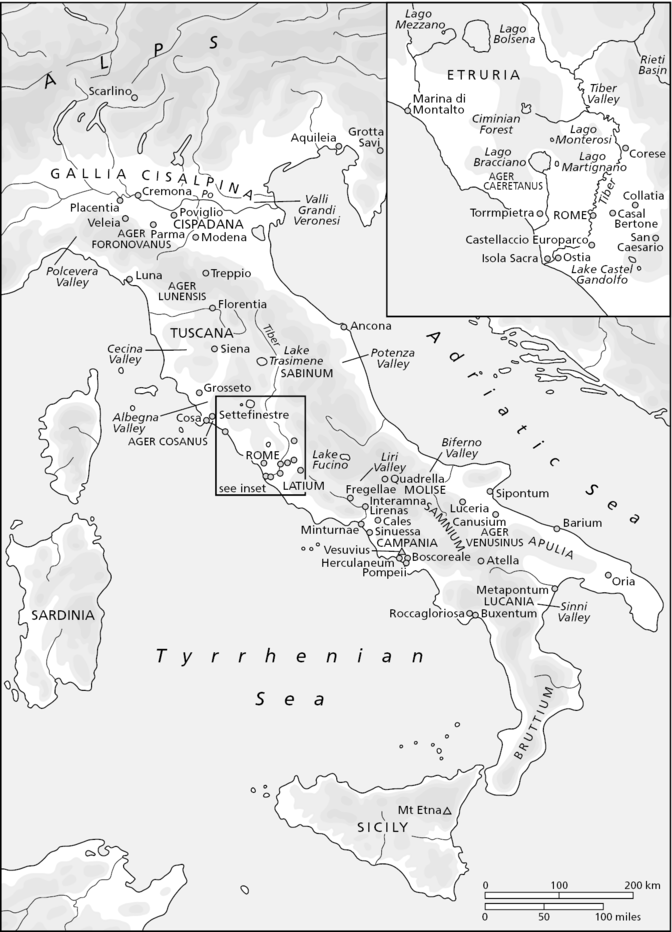
Map 1 Map of Italy

Map 2 The Roman Empire
Part I Economic and ecological parameters
Chapter 1 Introduction
This is a book about demography. As the study of population, demography attempts to grasp the dynamics of life: death, sex and migration. It targets turning points in people's lives that they themselves would not easily forget: how many wedding rings (if any) they wore; when they were first married and to whom; the birth of their children; how and where they moved and how long they stayed there; personal sickness and health; and the deaths of loved ones. In trying to figure out these details, demographers are like children in their annoying why? phase, dissatisfied with facts and wanting to know the reasons behind them.

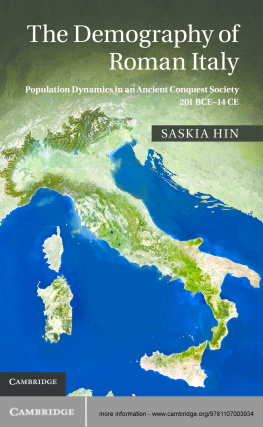

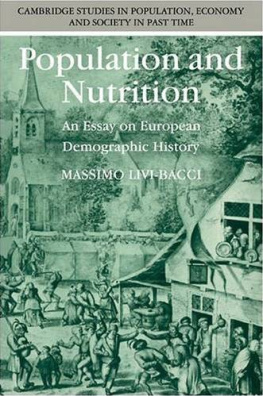
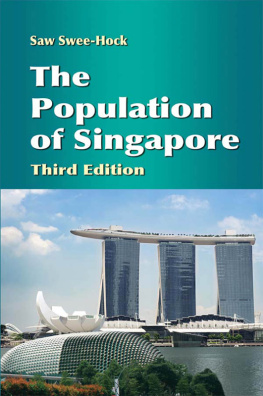
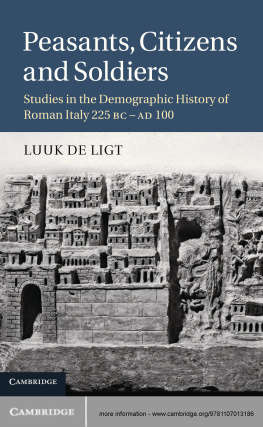

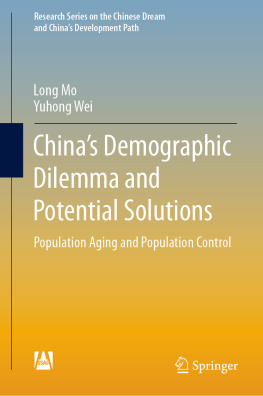

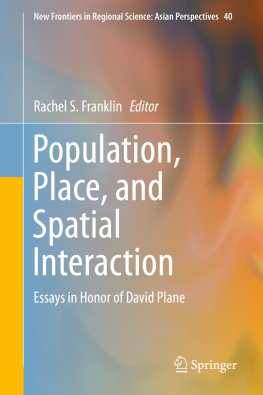
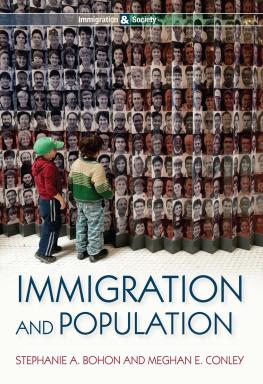
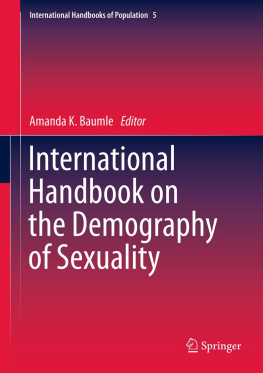



 09014 dc232012030786
09014 dc232012030786
